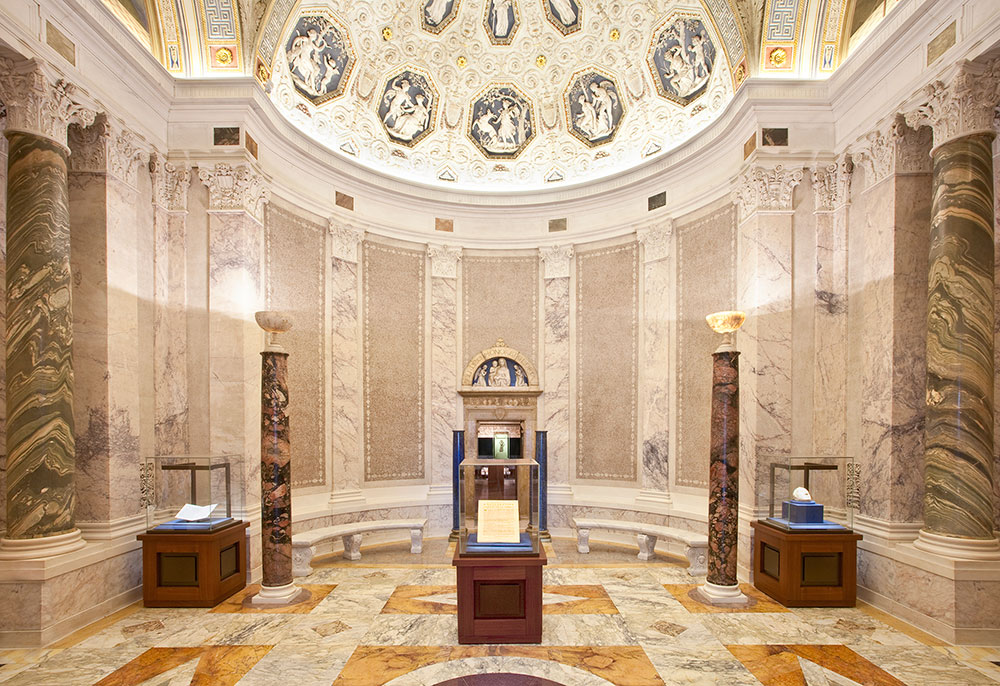
J. Pierpont Morgan’s guests must have been surprised as they passed through his Library’s front doors and stepped into what the architects called the main hall. In a New York minute, they had left an ordinary urban sidewalk and entered a soaring space full of color and ornament. It was impossible not to gaze upward: the ceilings were decorated with painted murals and stucco reliefs, heightened with gold.
To create this “lofty hall of rarest marble,” as the London Times called it in 1908, architect Charles Follen McKim incorporated strong echoes of luxurious spaces built in Rome in the fifteenth and sixteenth centuries. But the freestanding marble columns in the Rotunda of Morgan’s Library were wired for electric light—a reminder that the building was a twentieth-century creation, not an Italian Renaissance palace.
